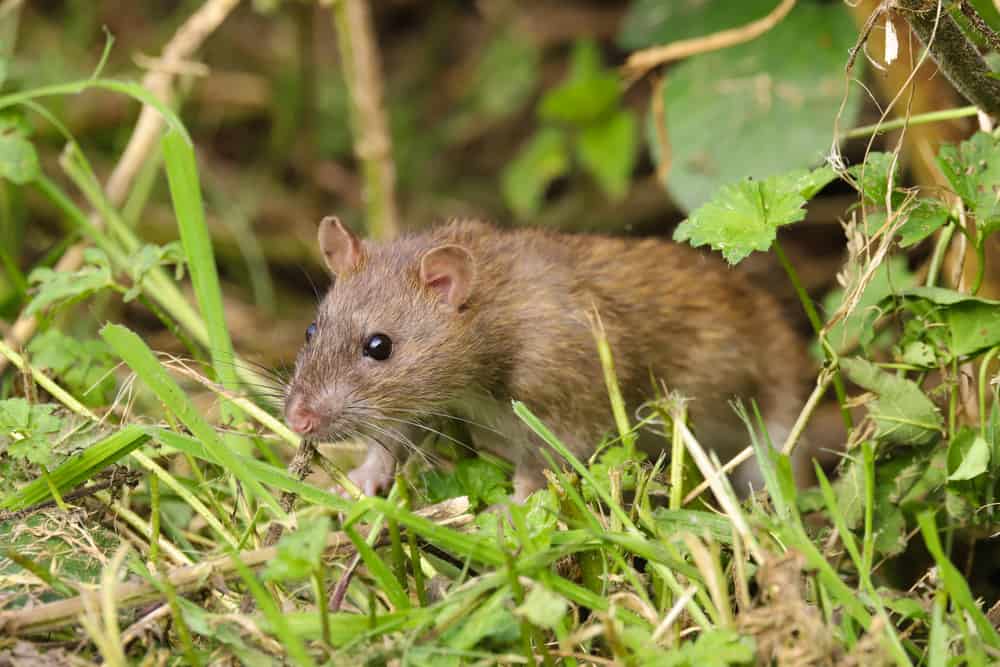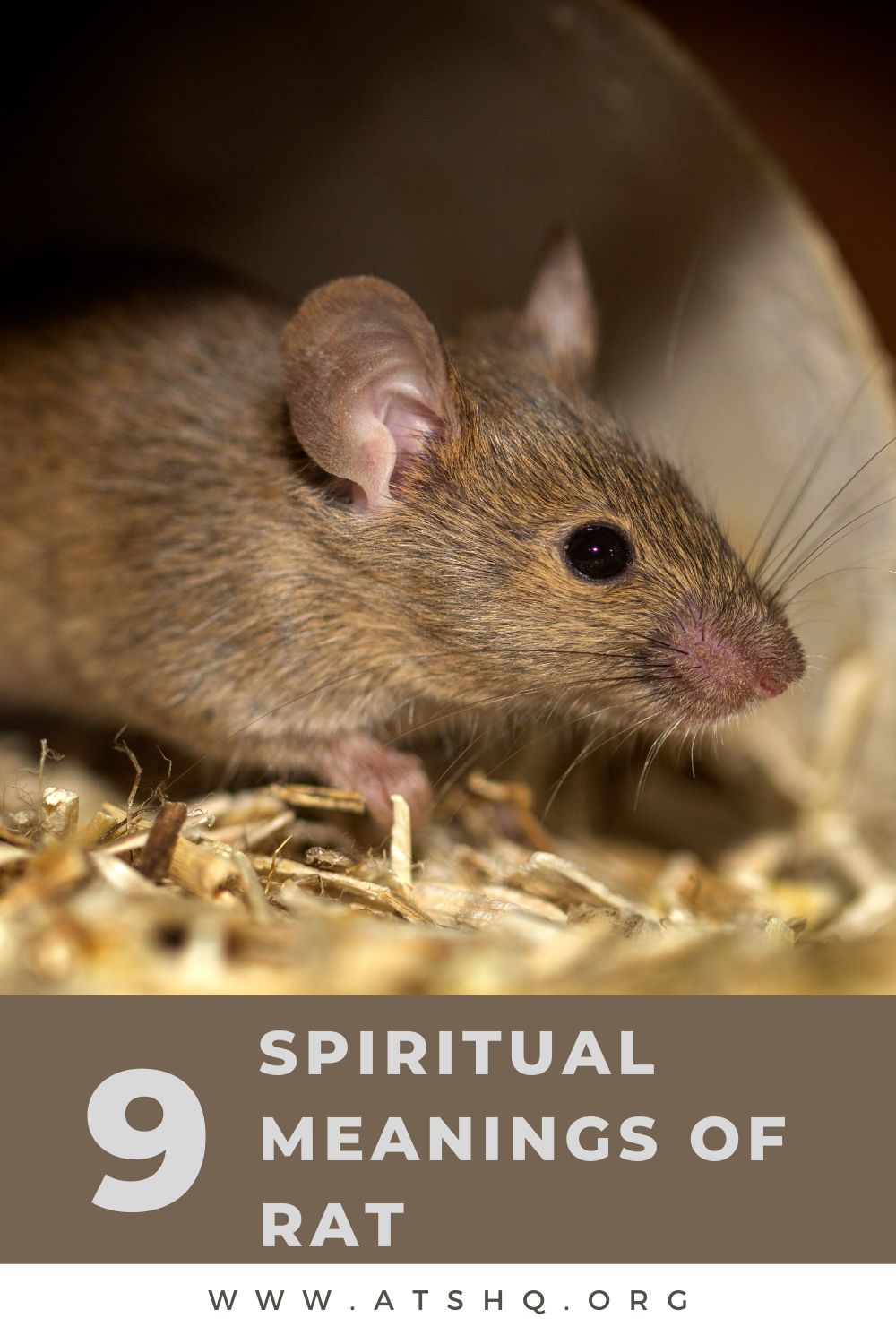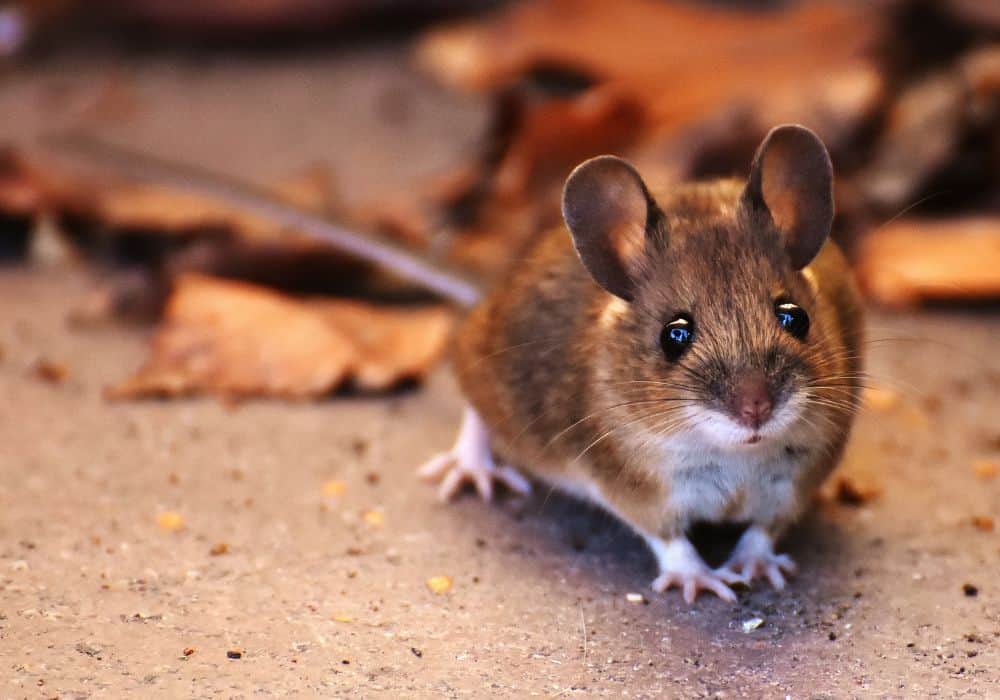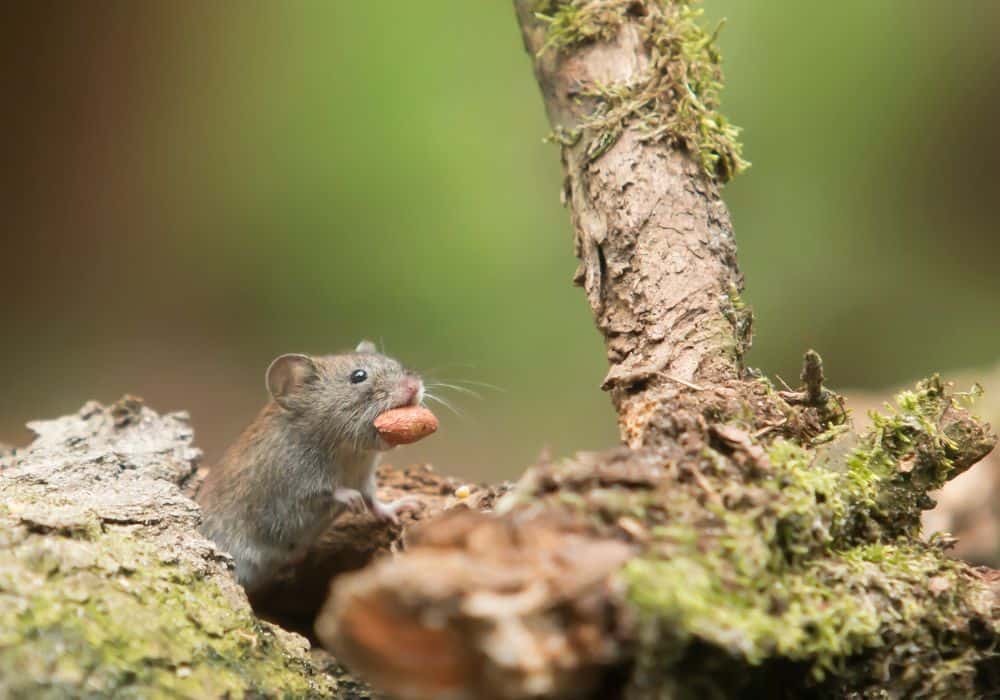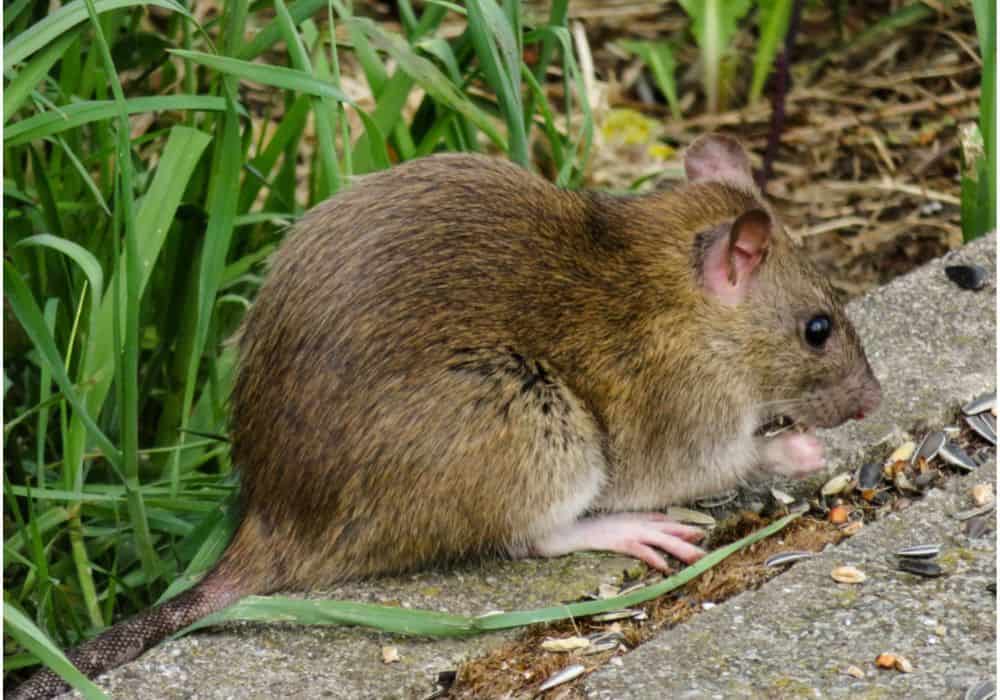Whenever we see a rat on TV, or in a comic book or movie, they are generally portrayed as ugly, dirty, invasive animals responsible for death and disease. Rats have been used by Nazi regimes to malign the Jews, as well as by the USA to dehumanise the Japanese. And yet, at the same time in other corners of the world, rats are celebrated as creatures of intelligence, resourcefulness, survival and adaptability. So exactly what are rats, and what does their presence mean? In this article, we’ll explore the deep symbolism behind rat spirit animals, rat totems, rat dreams and rats as an emblem throughout human history.
An Introduction to Rats
‘Rats’ covers an extensive network of long-tailed, medium-sized rodents in the superfamily Muroidea, which includes other rodents such as voles, hamsters, lemmings and gerbils. Historically, there was once no distinction made between mice and rats, since they shared ostensibly the exact same traits (except for size). The Romans, for example, spoke of mice and rats as mus minimus (small mouse) and mus maximus (big mouse) respectively.
There are many, many different species of rat, including some outside the genera Rattus – such as Neotoma (pack rats), Bandicota (bandicoot rats) and Dipodomys (kangaroo rats). The most common rats, however, are the “true rats” black rat and brown rat. These are the rat species you are most likely thinking of right now, for example. They originated in Asia, and grow up to around 0.5kg (1.1lbs) in weight.
Appearance
Rats are a lot cuter in appearance than their reputation would suggest. As part of the largest subsect of mammals on earth – the rodents – they retain the same small, whiskered faces with deep, beady black (sometimes red) eyes of their Rodentia cousins.
Rats have relatively large ears comparative to the size of their heads, which stick up and out always listening for signs of trouble. Large, rotund bodies covered in soft black, brown, or sometimes mottled white and colored fur are supported by little pink claws and end in long, thin-skinned and highly-vascularized tails.
They use their specialized tails for spatial awareness and thermoregulation, as well as to aid in escaping from predators (via degloving). On very rare occasions, when rats are in close confinement, their tails can become entangled and form what is known as a “Rat King” (unfortunately, this generally leads to the death of the pack).
Distribution and Habitat
Rats evolved in Asia, but with the development of international naval trade began to spread elsewhere in the world. They are extremely adept at survival, most often found living wherever their is a human presence. Common rats feed on human food, waste and scraps in a relationship described by the biological community as “commensal“.
Wherever rats have existed for a long time, their populations are generally kept under control provided waste management in the given area is efficient. However, when rats are introduced to new countries, areas, or settlements which have not previously experienced living alongside these rodents, the results can be disastrous.
Rats breed at a rapid rate, their numbers swelling wherever a ready food source exists. It is said in the largest cities of the world, such as Mumbai, New York, London, Lagos and Ciudad de Mexico that you are never more than a few feet than one of these furry little fellas. If that place is unused to rats (as happened many, many times throughout history) then famine and disease among the human population may quickly ensue.
Behavior and Diet
Rats may operate alone or in packs, but are typically never found far from another of their kind. They are omnivores and not picky eaters, eating anything remotely edible. Rats moved quickly and can swim very well (even up sewer pipes and into toilets!) – if they can’t eat something quickly, they’ll drag it away to store it somewhere safe for later sampling.
Interestingly, if rats are presented with a large range of foods, they will sample just a little of each. Biologists have discovered that this is so that rats can determine which of the foodstuffs available in their home range is highest quality, and which is present at what times of the year. In short, they keep record of what to eat and when, so as to maintain as steady and varied a diet as possible.
Rats will burrow and nest together, in caves or cracks in trees, or in leaf litter on forest floors, if not in urban spaces. Rats like to go hunting together too, with the sexes intermixed. They prefer to nest in a separate area of their territory to where they eat.
The Symbolic Meaning of Rat & Rat Spiritual Meaning
Chinese Astrology
Whilst in the West we often see rats portrayed in a negative light, this is truly not the case across much of the rest of the world. In Chinese culture, for example, the rat is famously the first animal of the 12 year zodiac.
Each of the 12 cyclical lunar years in the Chinese calendar has an animal assigned to it (pig, rooster, tiger, dragon and so on), each with a set of characteristics said to correspond to people born during that particular year.
People born in the Year of the Rat, for example, are said to be intelligent, virile, powerful and shrewd, honest, generous, ambitious, wasteful and with a quick temper, as well being a true survivor. This rat energy lends itself to great leadership qualities, but also occasionally to jealousy, deceit, aggression and selfishness.
European History and the Black Plague
Europeans have a long and misfortune-strewn relationship with the rat. Beginning in 1346 and lasting until 1353 (although with repercussions stretching until today), the Black Death was a bubonic plague pandemic. Much like COVID-19, the Black Plague swept across the Afro-Eurasian continents. It caused the deaths of between 75-200 million people (or about 75-90% of the population in some places).
And where did the Black Death come from? Well, unfortunately for rats, they had a major role in its spread. The bubonic plague (bacterium Yersinia pestis) was spread by infected fleas which essentially hitched a ride on the backs of rats. These rats spread from town to town by ship and by land, and everywhere they went, the plague went with them.
To this day, rats remain symbols of evil and destruction throughout much of Europe and Europe-colonised countries, such as the USA. They are omens of coming disease, of dirt, grime, uncleanliness and all the wickedness associated with those things. Rat encounters in Medieval Europe generally meant death.
Of course, it’s not rats’ fault that they brought Yersinia pestis with them, is it? But then, if I was alive at the time, I can’t see myself letting them off the hook.
Hindu Mythology
In the traditional Indian religion of Hinduism, the gods are always depicted as having their own personal animal vehicles, or mounts. For Ganesha, the elephant-headed deity, his Vahana (sacred vehicle) is a pack of rats.
In any temple dedicated to Ganesha, you’ll always find a statue of a rat. Though rats can pose peculiar problems for India (including the dreaded bamboo rat flood which occurs every five years), they are nevertheless considered sacred for their role in aiding Ganesha.
There is even, believe it or not, a rat temple in Deshnoke, called the Karni Mata temple, in which rats are worshipped and fed on milk and grain by the priests and pilgrims. It is believed that the rats are destined for reincarnation as Hindu holy men, called Sadhus.
Rats in Christianity
The Bible isn’t a big fan of rodents, unfortunately. Perhaps as a lingering after-effect of the Plague of Justinian, another bubonic malice which ransacked much of the East Roman Empire in the 6th century AD (and thus coinciding with rewriting and copying of earlier Bible versions), or in connection to some other disease spread by rats, we are explicitly told in Leviticus 11:29 that rats are unclean and should never be eaten.
Native American Rats
To Native Americans, especially the Sioux, rats are holy beings and creators of the earth. In Sioux origin stories, a muskrat swam down into the primordial soup at the start of the world and from the mud and sludge dragged up land for the animals to live upon.
In other Native American tribes and nations, the rat may simultaneously symbolise speed, dexterity, shrewdness, perseverance and survival as well as negative traits.
Rats in Celtic Culture
Despite the devastation apparently wrought by rats upon the Old World, in Celtic traditions and mythology they actually retain some pretty positive connotations and meanings.
One of the most prominent Ancient Celtic belief surrounding rats is in their wisdom and foresight: a belief that rats have an innate ability to see the future, or at least to tell what’s coming long before humans can.
For example, rats were looked to as signs of a healthy home. If there were rats, then there was warmth, an abundance of food, and no danger in sight. If, on the other hand, rats abandoned your home, then that was taken to mean that either someone was about to get sick, or the house was about to burn.
We’ll see more of this belief in the ‘sinking ship’ section below.
Rats in Language, Popular Culture and Folklore
The Pied Piper of Hamelin
One of the most famous pieces of rat-themed folklore is surely the folk tale, or rather legend, of the Pied Piper of Hamelin.
In this story, a piper comes to the small town of Hamelin in Lower Saxony, Germany, hired by the townspeople to lure the plague-ridden rats away from their town. The piper does so, but before he leaves for good, he also takes away the children, hypnotising them with the playing of his instrument.
There have been many theories seeking to get to the bottom of the Pied Piper, however the prevailing one seems to suggest that the story is a deliberate metaphor for the Black Death. Once all the rats finally died off or left, the people could rejoice. And yet, at the same time, their small community had lost many of its youngest, most vulnerable children to the plague.
In order to celebrate the survival of the town at the hands of the legendary ‘piper’, they must also to mourn the loss of their children to him as well.
“Rat” the Informant or Union Buster
The term ‘rat’ has long been employed by unions, gangs, prison inmates and regular civilians to refer to someone sneaky, selfish and disloyal enough to inform on one of their friends, family members of affiliates. In other words, to turn someone close to them over to the authorities.
In this sense, calling someone a ‘rat’ is a grave accusation, and one which has led to many deaths in the gang and prison worlds over the centuries.
Rats are also a symbol used by trade unions, generally in America, to identify a non-union member sympathetic with the bosses, owners or other union antagonists.
In general, the word was first used because of the negative associations attached to rats in Western history – it was a horrible thing to call someone. Over time, however, it has acquired its own negative connotations relating to the idea of ‘snitching’.
The Sinking Ship
It is widely held as true by sailors and seamen of all kinds that rats aboard a ship (of which there are almost always some) will evacuate the sink before the ship goes down.
How the rats might know something was wrong long before humans could remains a mystery (if indeed its true), but if a rat is seen fleeing a ship, then the crews are bound to take it as a dire omen.
After all, why would rats leave the warmth, food and safety of a ship for the cold seas if not for good reason?
Conclusion
Rats are much-maligned creatures, but in reality they are intelligent, dextrous, speedy and shrewd, as well as a vital part of our world’s ecosystem. They have been used by Republicans and Nazis alike, to dehumanise minority groups, and continue to be a symbol across much of the world for death, disease and destruction. In other parts, however, they are beloved – worshipped even! Perhaps we should all take a leaf from the Asian book…
